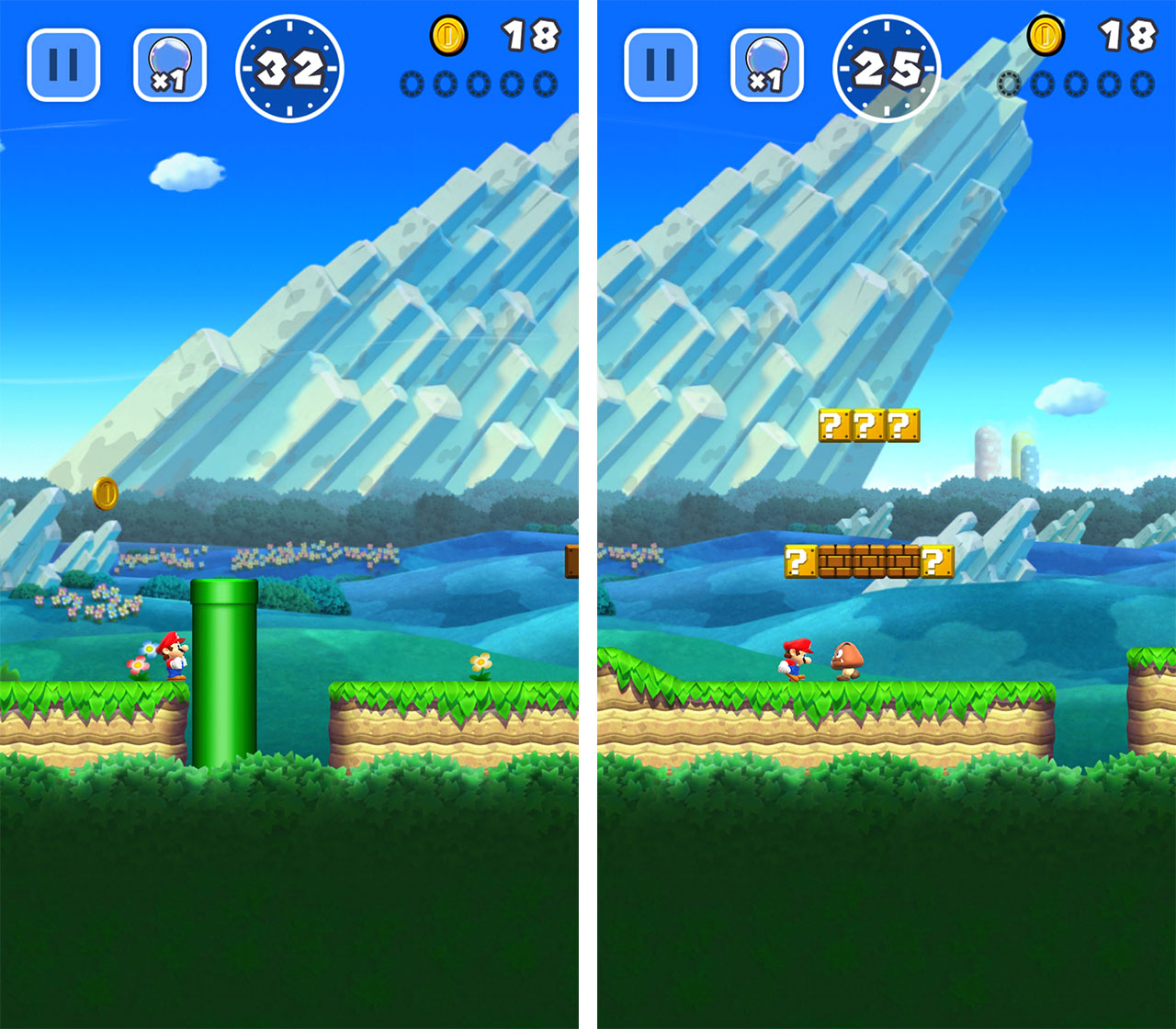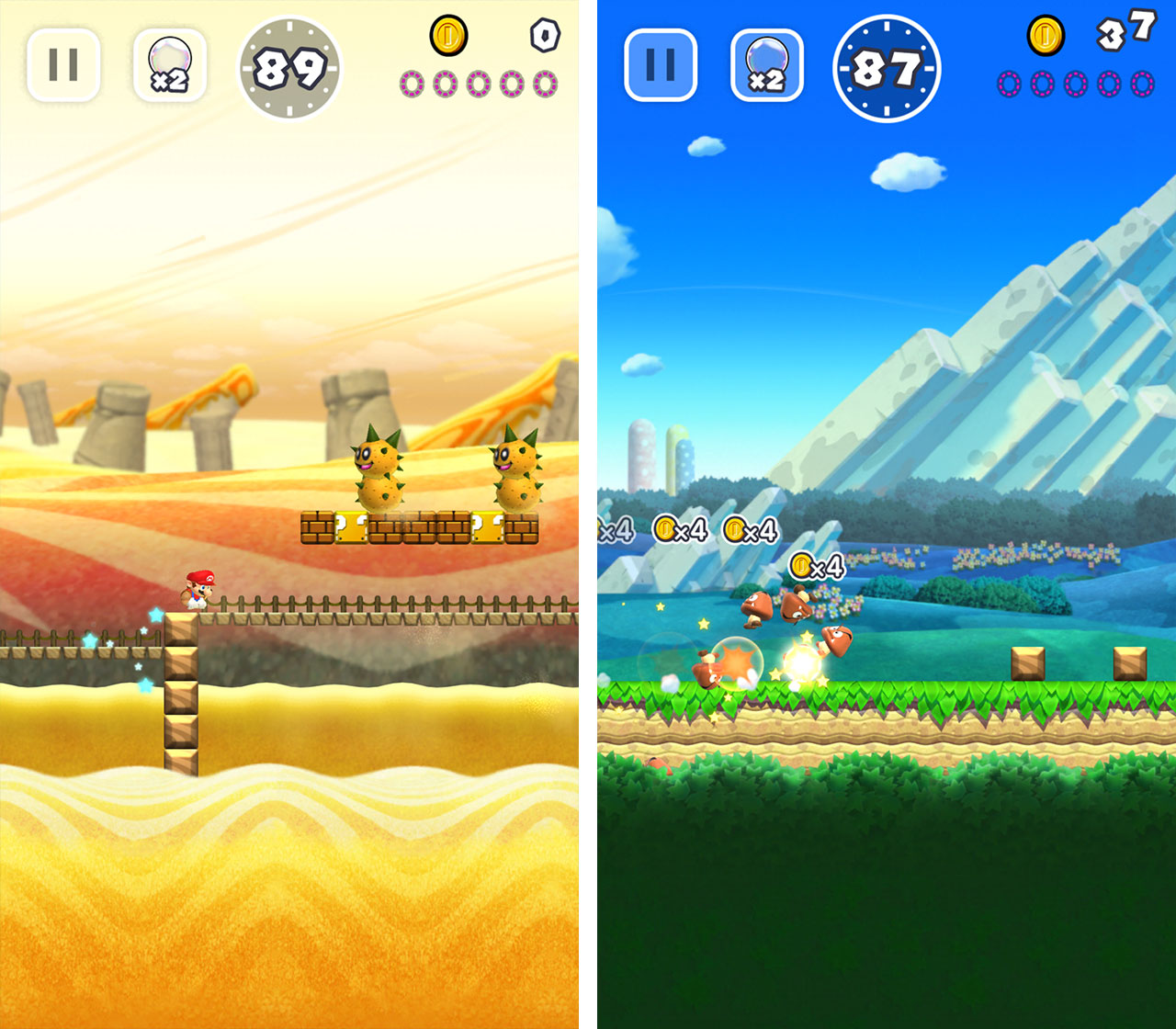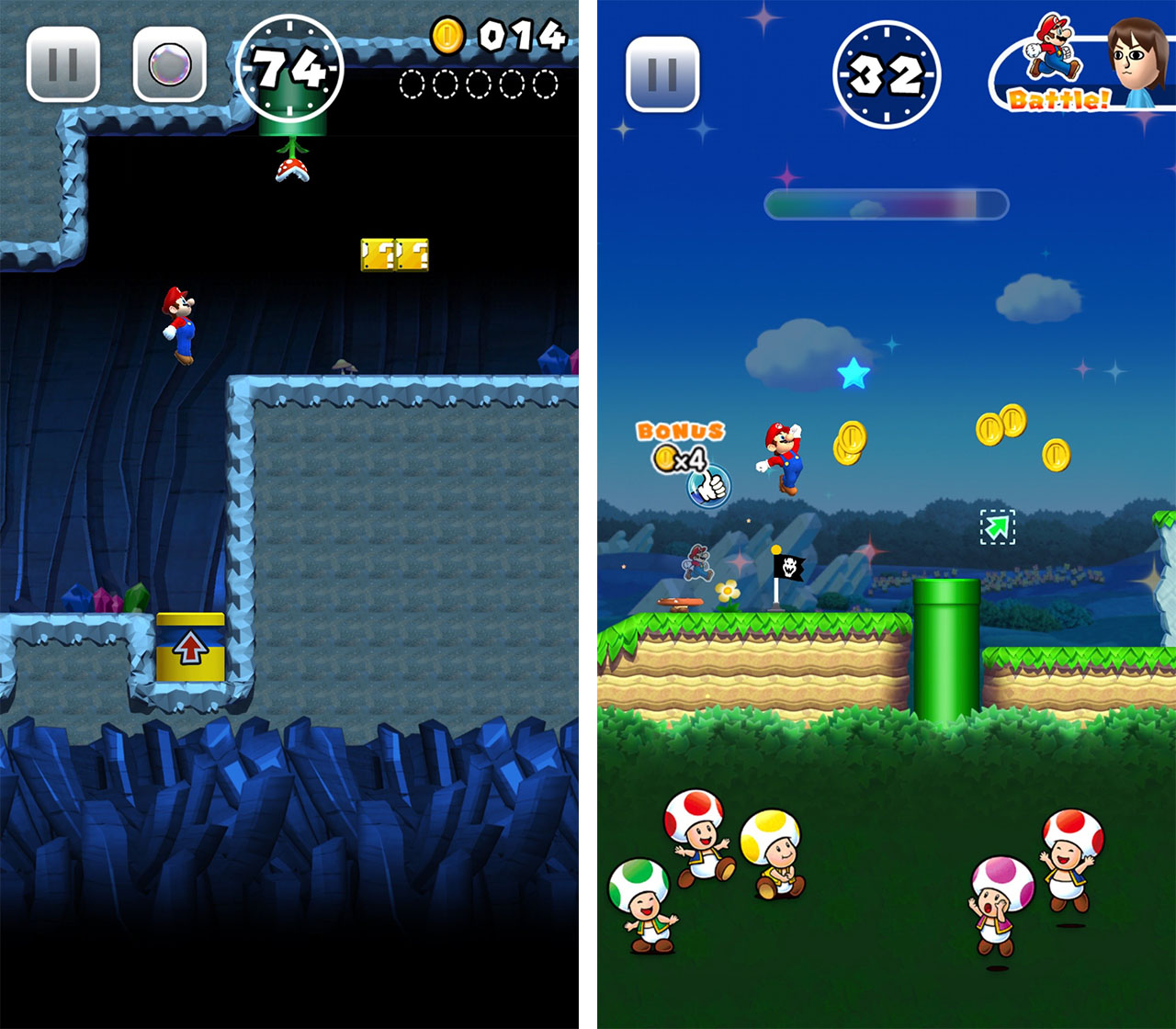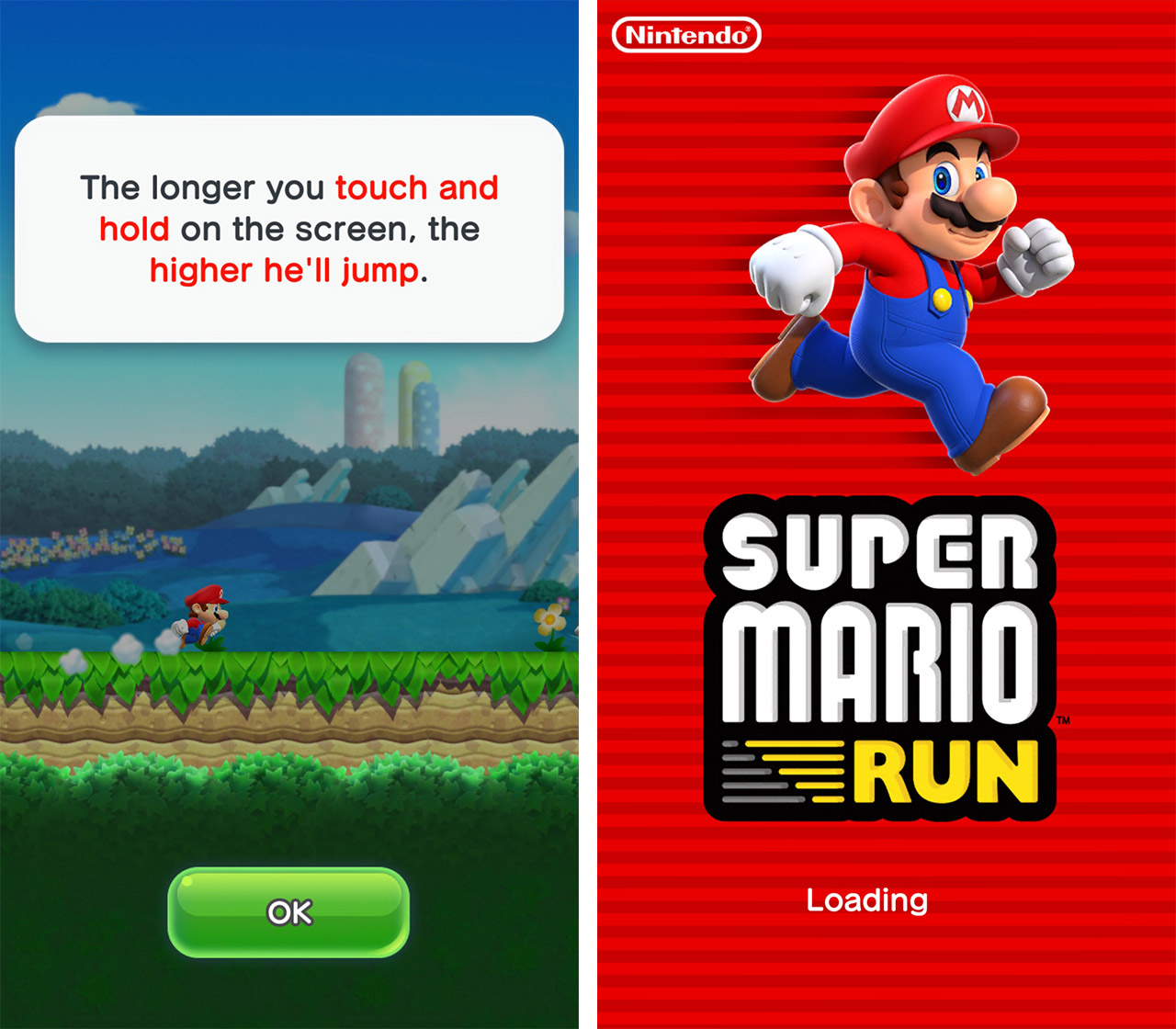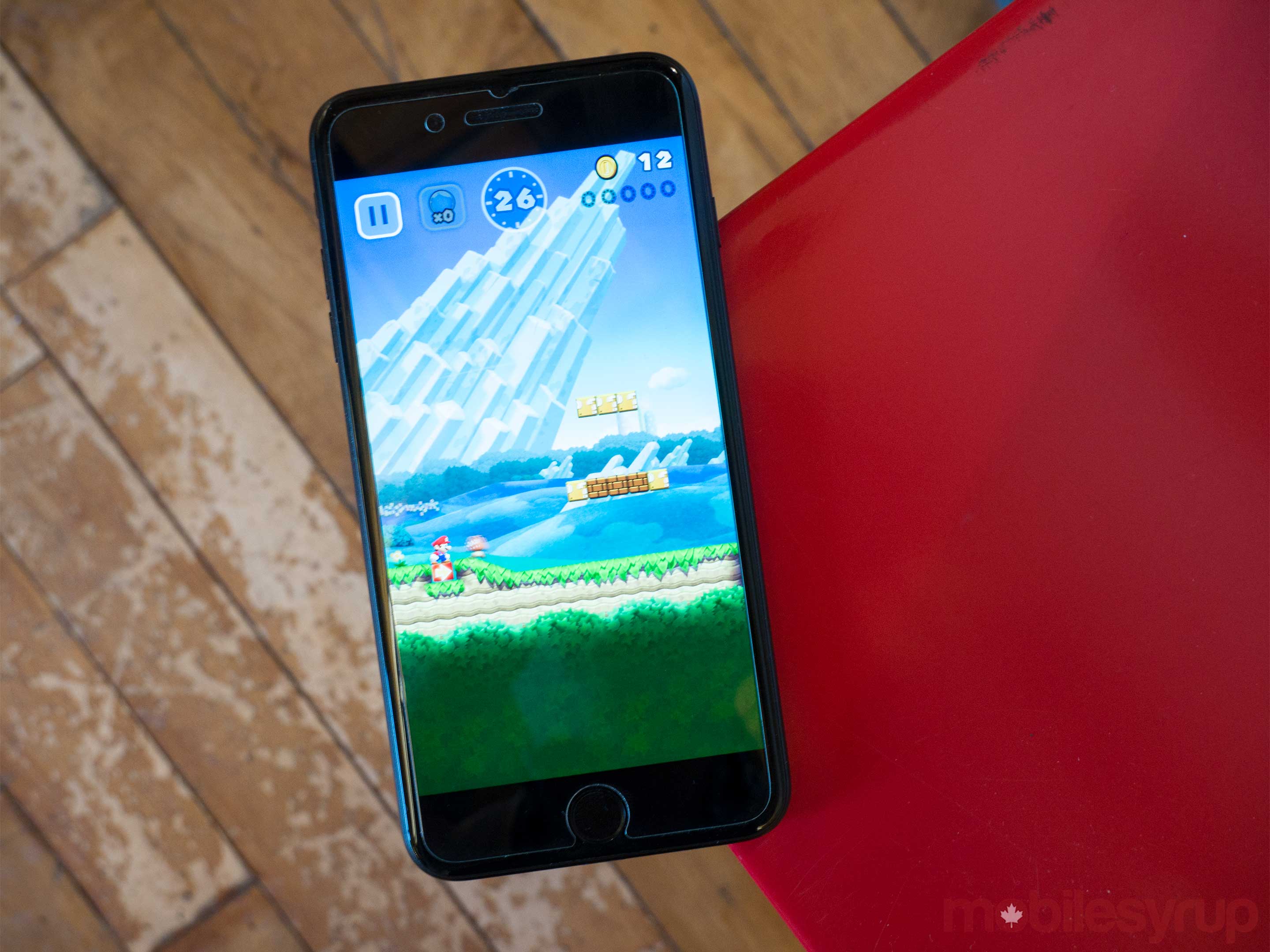
At the outset, it’s amazing Super Mario Run even exists.
Nintendo, the Japanese gaming giant behind the Mario franchise, is a stoic, slow-moving video game developer and hardware manufacturer that rarely moves its business practices in line with the broader, faster-moving video game industry. Some might even go so far as to say that while Nintendo still releases some of the most polished, top reviewed titles in video games (just take a look at the Wii U’s stellar library), its hardware offerings are often years behind its competitors.
With Nintendo’s upcoming handheld-console hybrid Switch console still looming close on the horizon, the release of Super Mario Run is a fascinating move by the struggling gaming giant.
Super Mario Run iOS launch marks a fundamental shift in the way the Japanese developer views platforms it hasn’t manufactured. The release of a mobile version of a core Nintendo franchise is one of few instances where an entry in one of the company’s iconic series has made its way to gaming device not manufactured by the Japanese company.
Bringing an iconic franchise that prides itself on balance, precise control and intricate level design to mobile, is a difficult task that few developers beyond Nintendo could accomplish with any degree of success. To Nintendo and DeNA’s credit, Mario feels right at home on mobile in Super Mario Run for Apple’s line of iOS devices, though the game still suffers from a number of flaws.
Surprisingly accurate controls
The most impressive thing about Super Mario Run is the admirable attempt Nintendo has made at translating the Mario franchise’s classic 2D gameplay to mobile. Rather than just port the series’ standard controls to Apple’s iOS platform, Mario runs automatically from left to right. Tapping the screen causes the plumber to jump, which allows him to break blocks, collect coins and smash enemies, all core mechanics of the now over 30-year-old franchise.
For those familiar with mobile gaming, Super Mario Run is an endless runner, but not in the traditional sense. Each stage has been carefully handcrafted and feels like it could belong in a more traditional side-scroller.
For the most part, this simplified control scheme works well in Run, though fans of classic Mario Games will likely be put off by the fact that Mario is always moving forward. There’s no way to go backward in Super Mario Run unless you die and turn into a bubble (more on that later).
Given the limited input options when it comes to touchscreen mobile games, as well as the inaccuracy that stems from an on-screen d-pad and buttons — anyone who’s played a more conventional 2D platformer on mobile knows what I’m talking about — Super Mario Run’s controls are the best possible outcome for a 2D platformer designed for a smartphone.
Players will spend most of their time with Super Mario Run playing World Tour mode. Similar to a standard Mario adventure, World Tour spans 24 levels across six different worlds, though individual stages are random and worlds do not stick to a specific theme.
Every stage has the look and feel of a classic Mario title, and save for a few exceptions (all the Ghost Houses are brutal), Run’s level design is on par with what fans of the series have grown to expect. Franchise mainstays like Ghost Houses, deserts, platform-focused stages and other known Mushroom Kingdom territories, appear frequently through the brief but expertly crafted and polished campaign.
All in, Super Mario Run’s core World Tour Mode can be completed in just a few hours. If you want to collect all the various coins present in each stage (which has three levels of difficulty), World Tour mode is extended significantly and also becomes more difficult. While I typically have no interest in collectibles in a Mario title, I found myself spending hours vying for red and purple coins in Super Mario Run.
Visually, Nintendo’s clean, colourful and all-around charming art style, which received a fresh coat of paint with the release of New Super Mario Bros. for the DS back in 2006, makes a return in Super Mario Run. I’d even go so far as to say that Super Mario Run’s visuals rival that of more recent Wii U entries in the series.
Adapting the formula
Mario’s familiar formula, however, has been changed in ways that could frustrate long-time fans of the series. Characters now automatically vault over enemies. For example, running into a Goomba or Koopa will no longer hurt Mario. Instead, the plucky plumber vaults over the enemy, stomping on their head in the process, boosting the jump, but only if you’ve timed your screen tap perfectly.
This new mechanic could take some getting used to for some, though it makes sense in the context of Super Mario Run’s one-button control scheme. The game also ditches the traditional life system featured in most Mario titles for a “bubbles” mechanic that’s reminiscent of crying Mario from Super Mario World 2: Yoshi’s Island.
If Mario falls into a pit or perishes in another way, a bubble will ensnare Mario and drop him in an area of the map behind you. This system can be used to your advantage when hunting for coins in specific levels. It’s also more forgiving than the traditional lives system featured in almost every other Mario title ever released.
Welcome to Toad Rally
Super Mario Run’s other main gameplay mode is Toad Rally, a game type that pits players against one another in asynchronous “ghost” multiplayer. This portion of Super Mario Run is likely where most players will get the bulk of enjoyment from Nintendo’s first serious foray into mobile.
During a race, whichever player snags the most coins and attracts more Toads (with spectators cheering you on), accomplished by chaining together enemy kills and fancy platforming skills, emerges the winner. Toad Rally is fast paced, chaotic and is the only way to level up your Mushroom land in Super Mario Run’s third mode, Kingdom Builder. The only downfall of Toad Rally is the fact that it requires tickets to play. While you start off with a large number of tickets in the game, the items quickly dwindle and are replenished sparingly. Only after unlocking double question mark boxes was I able to earn a steady supply of Toad Rally tickets, but getting to this can take a significant time investment.
While Toad Rally is entertaining, the act of actually unlocking new Super Mario Run features through this mode quickly begins to feel like a grind. Levelling up your kingdom can require hundreds of multi-coloured toads in some cases. In Kingdom Builder, Super Mario Run’s most disappointing feature, players are able to create buildings and other items in order to unlock new playable characters — Peach, Toad and Luigi etc — as well as special levels.
That price though
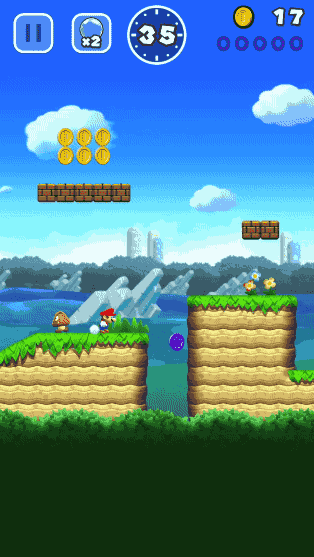
Nintendo’s first serious mobile gaming offering — I don’t really count Miitomo as a ‘real’ game — is an impressive and arguably very successful first attempt at bringing the series to mobile. Super Mario Run feels like a Mario title in every sense, though it’s difficult to deny that for the game’s hefty $13.99 CAD price tag, many players will expect a more in-depth experience, especially from World Tour mode.
While free-to-play has become the norm in the mobile gaming industry, Nintendo opted to go the route of a one-time payment with Super Mario Run, an admirable move by the company that should be applauded. The game’s hefty price tag, however, doesn’t feel justified when the actual amount of content players end up getting in Super Mario Run, is taken into consideration. Rumours also point to the fact that Nintendo has no plans to release additional downloadable content for the game.
The fact that Super Mario Run always requires an internet connection, could be considered a major issue with the game by some. While Nintendo’s fear of piracy is valid, there are less intrusive methods of digital rights management (DRM), especially considering piracy is less of a problem on iOS. Depending on where you plan to play Super Mario Run — for example on the subway, or another location where internet connectivity is spotty — this could be a deal breaker.
MobileSyrup may earn a commission from purchases made via our links, which helps fund the journalism we provide free on our website. These links do not influence our editorial content. Support us here.

